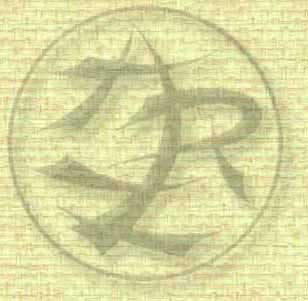
| Home Page > Aikido > Principles of Aikido | ||
| PRINCIPLES OF AIKIDO | ||
Last update: 01/01/2018 |
||
CIRCLE - MOKUSO - UKE - GLANCE - ESSENTIAL RULES OF CEREMONIAL AND RESPECT |
||
| CIRCLE | ||
Fundamental principle: the techniques of Aikido are organized around circular motions. Any conflict is solved through the spirit of the circle. A circle delimits a particular space, and it is perfect freedom of the vacuum thus created that bears Ki. |
||
| MOKUSO | ||
It is an immutable ceremonial which starts and close a course of budo. At the beginning of the course, Mokuso makes it possible to create the vacuum in the spirit of the practitioner and to remove tensions and stress of the day to day life. It is an invisible barrier between the external world and the privileged enclosure which the dojo constitutes. At the end of the course, it is on the contrary a return to a state of calm, to normal. |
||
| Attitude : | ||
- The practitioner sits in Seiza. Hands are posed on the thighs, left hand posed on the right hand; the joined thumbs forme a circle - not forming either a mount or a valley. - The bust is straight up. One must be able to imagine a straight line from the top of the head to the coccyx. The shoulders are slackened. - The eyes are half-closed, “fixing” the ground at approximately 1.5 meters in front of oneself. - The mouth is closed. The tongue is separated from the palate; the tip touches the jawbone teeth. The breath is calm, abdominal. The spirit is in a state of Mushin. It is necessary to let your mind wander as the clouds more freely in the sky, without stopping. |
||
| UKE | ||
Uke is the conventional attack which is thrown by the person who will also receive the technique to be worked on by his partner. As the roles of the partners are switched so that each one can work the technique, one can guess that there will not be a good technician without attacking right. In other words, good Uke will be good Shite. What has to be the attitude of Uke? It must be sincere in its attack, direct, tempered, without fear of hurting, nonaggressive, entrusting in his partner. It should not block the situation. It must rather seek to make the other progress, by agreeing to follow the movement that one gives him. The best way for him to exit the movement is called Ukemi or break-falls. By accepting the other, by accepting the movements, one learns how to moderate his techniques and to progress. Gradually, spontaneity will arise in the movements but first, there will be much dusting or cleansing to be made in the head and the body. |
||
| GLANCE | ||
The eyes should not fix a point. The glance is open. It includes all space around the partners. In practice, the eyes follow and even precede the movement. The head must remain right, even if you "look at" upwards or downwards. |
||
| ESSENTIAL RULES Of CEREMONIAL AND RESPECT | ||
|
The dojo is located at cross of two ways: the first, that of our everyday life with all that that comprises of soft comfort, facility, dispersion and alienation. The second, at the same time narrower and more deserts, which of our clean discovered, our own progression and our achievement.
To accept the ceremonial, to respect the ritual, it is initially to affirm its desire to learn something while being put at the Eastern school. It is then to facilitate the exchange between two civilizations and to show its intention to include/understand a way of thinking and a mode of spirit, a great curiosity and especially much of humility. That which takes the responsability inside a dojo to transmit a knowledge, a thought or a technique finds sometimes, seems to us it in a position of arbitrary power artificially founded on the absolute authority and the prestige, unquestioned, not contradicted, and which the rites and the ceremonial perpetuate. Seemingly, the relationship between individuals is narrowly depending on the ritual. In fact, they are established and develop according to the personality of the Master who by his culture, his know-how and its knowledge-to be, can transmit a knowledge and give to the place a particular and intense atmosphere. Often, its presence is enough to give birth to at the pupils the respect in his authentic form and most sincere. The ceremonial with it only, and its acceptance by all the elements of the community constitute to some extent the rule of the game. The permanent research of the correct attitude, at rest as with the combat, of the harmony on the level of oneself and others is the principle even improvement which makes of an individual an accomplished man. It avoids excesses of any kind, familiarity or carelessness. It makes easier the community life by obliging each one to control the least details of its control. It obliges with the effort and fact call to the will. In that, it is enough to create “better” of each practise. The ceremonial must be voluntarily agreed. It is the base essential to a work jointly advantageous. It is in this direction that it is necessary to include/understand the ceremonial and the exercises ritual in AIKIDO. They have of another goal only that to prepare the combatant with good to behave and to take again a thought of NITOBE Inazo in “Bushido, the heart of Japan”: “ … To cultivate your spirit in such a way that, even when you quietly sat, the idea cannot even come to coarsest from the churls to dare to attack you.” |
|
©ARZ - Academy of Ritsu Zen - Montreuil - France - 2000-2018 - All rights reserved - http://www.arz.asso.fr |
||